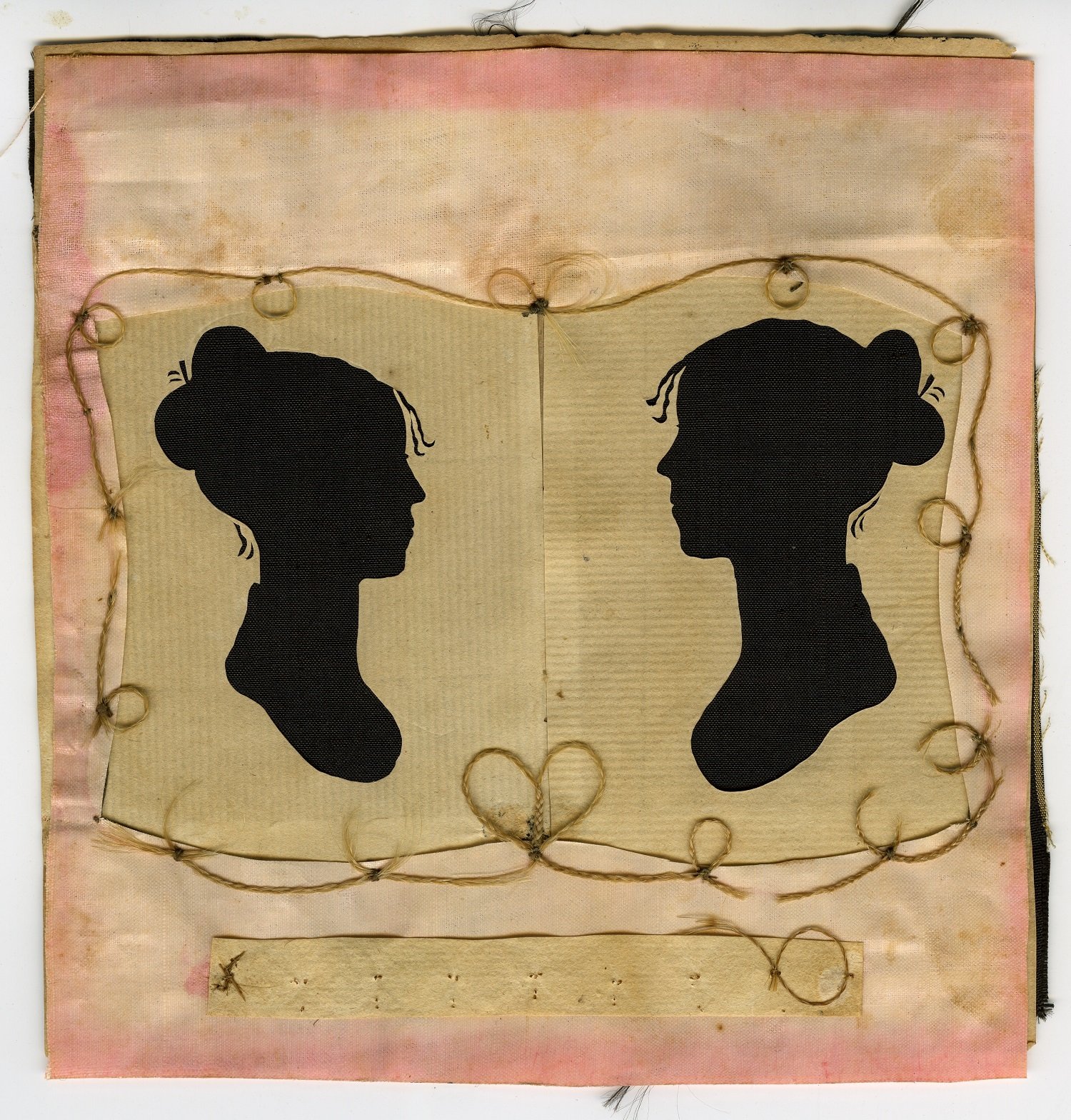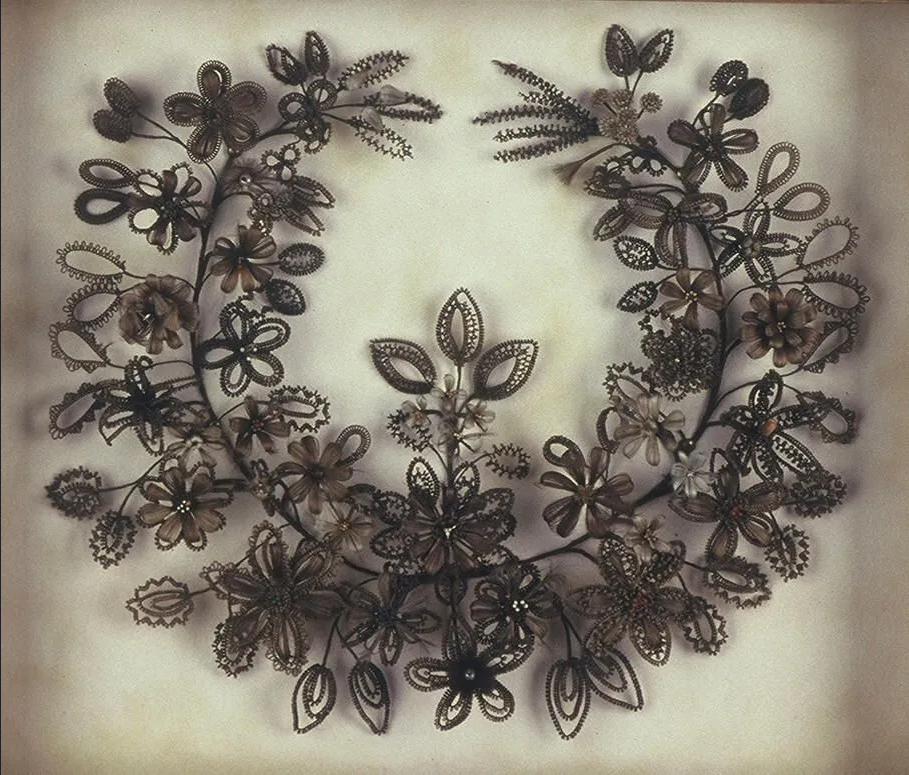
The Double Silhouette: Celebrating Pride Month through the Victorian Hairwork of Sylvia Drake and Charity Bryant
The Double Silhouette: Celebrating Pride Month through the Victorian Hairwork of Sylvia Drake and Charity Bryant
The Double Silhouette, housed at the Henry Sheldon Museum, stands not only as a beautiful testament to 19th-century hairwork artistry and silhouette creation, highlighting the era's intricate craftsmanship, but also celebrates the enduring love story of Sylvia Drake (1784-1868) and Charity Bryant (1777-1851), two remarkable women whose relationship continues to inspire and resonate today. Having lived as a married couple for over forty years, their unique double portrait is considered one of the earliest known images of a same-gender couple in America. The two women are buried together at Weybridge Hill Cemetery, sharing a single tombstone that commemorates their life together.

Reviving the Tradition of Hairwork, Preserving Heritage and Artistry by Diane Irby
The lack of acknowledgment of hairwork as a valuable artifact and important part of American cultural heritage is multifaceted and stems from a combination of historical biases, contemporary sensibilities, and institutional practices. Efforts to raise awareness, provide education, and promote the preservation and interpretation of hairwork as cultural artifacts can help address this oversight and ensure their recognition and appreciation in the broader cultural landscape moving forward. The revival of the traditional art of hairwork offers an opportunity to reclaim and celebrate an important aspect of our American cultural heritage. By recognizing and preserving the craftsmanship, cultural significance, and artistic merit of hairwork, we can honor the contributions of past artisans and ensure that this unique tradition continues to be valued and appreciated for generations to come. Through education, outreach, and a renewed appreciation for its historical and cultural context, we can elevate hairwork from obscurity and affirm its rightful place as a cherished part of American heritage.
After More Than a Century, the U.S. Passed Anti-Lynching Legislation, but It Still Wasn’t Unanimous by Diane Irby
After More Than a Century, the U.S. Passed Anti-Lynching Legislation, but It Still Wasn’t Unanimous by Diane Irby